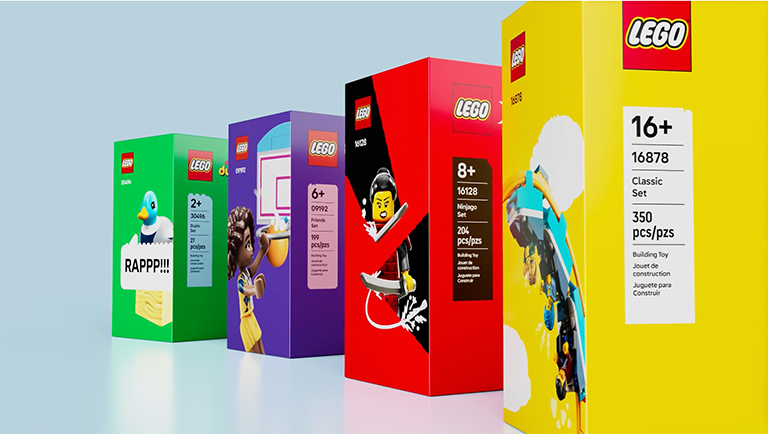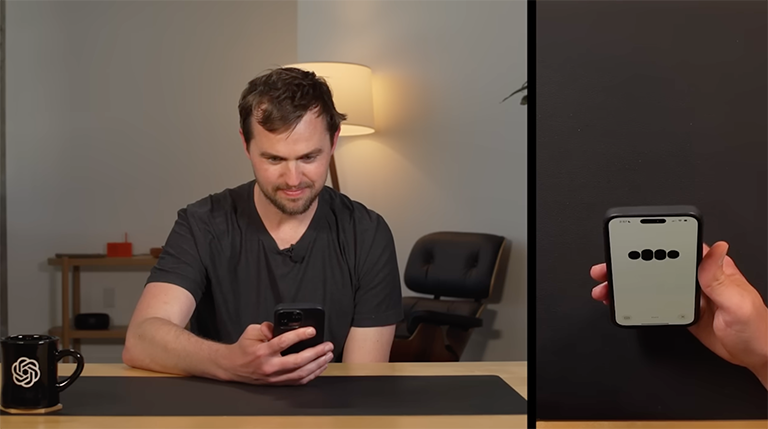 image credit: Apple
image credit: Apple
Is Apple Out of Touch With People? Or is it Something Else?
There hasn’t been a piece of advertising with as many takes on it as Apple’s newest piece for its next gen iPad since, well, maybe Apple’s original Mac ad some 40 years ago. ICYMI, Apple released an ad boasting the thinness of its new tablet wherein a giant hydraulic press smashes a wide range of mostly-analog objects—a piano, a turntable, a guitar, a vintage video game, and a sculpture, to name a few—only to reveal one shiny iPad in their stead. The ways this ad fails are so numerous, we don’t know where to put our focus. But its main failure is that the emotions it evokes among its audience are, in every way, the wrong ones. Disgust, hatred, horror, loss, disdain. Not the emotions you want people to feel in trying to persuade them to purchase a very expensive tablet. The most common take on this ad is that it is tone-deaf, as is Apple. And that’s astute—fear of AI is rampant. Music and Arts funding is (again) under attack in schools. The music industry has changed almost completely, and has spurred a return to vinyl collecting. People feel like tech is stealing their valuable time, instead of enriching it. But as marketers, we have to ask why and how did Apple miss all of this?
Many are saying it is Tim Cook’s lack of vision and push for efficiency. Others say its Apple’s desire to catch up in AI (which is a Wall St. pressure, not a consumer one). And yet others say it was because it was an in-house production. It was probably some combination of all of these, but the latter—the lack of an outside agency—probably sealed the ad’s fate. Outside agencies can provide value in lots of ways. But central to their value proposition is taste. Agencies provide taste. Say what you want about egos, salaries and agency culture, but at the end of the day, good agency creatives know when something is going to land, and when something else is going to, well, blow up in the client’s face—even if the strategy, benefits and “technicals“ all line up. No one here told anybody “no, you don’t want to do that.” No one said, “you know, people don’t care about AI, and if they do, they’re worried about it.” Or, “you know, you’re just advertising that you can do all these things with an iPad, which are things pretty much any tablet can do.” Or, “you realize this is an ad that destroys all the things people love, right? And it’s our tech destroying it?” No one said that. Great agencies tell clients the hard truths, and then help them align around the right way out of it. We’re not saying internal creative teams aren’t good. But evidence suggests it is hard to do great work in cultures that aren’t honest about hard truths. Apple used to be famous for that, btw. (Mashable, AdAge)
 image credit: LEGO via BrandNew
image credit: LEGO via BrandNew
LEGO Reimagines Its Visual Language
LEGO is a brand near and dear to our hearts. As one of the largest toy products in the world and arguably one of the strongest, most creative brands in any category, updating the brand comes with a lot of risk. Luckily, this company has never shied away from a challenge, as LEGO has overhauled its branding system, adding a new visual language that deeply integrates some quintessential product equities and gives its packaging and communications a graphic boost. Overall, it is a strong effort, and the reviews are positive. As sometimes-AFOLs ourselves, we have mixed feelings about how much LEGO bricks should interact with real-world stuff in communications, and this system definitely blurs some lines around that; we have to wonder about speech bubbles made out of silhouetted LEGO bricks. But the illustration “font,” called Clutch, is pretty smart, and the executions are visually arresting and fun. And the respect shown for the product and its rich history is inspiring. (BrandNew)
 image credit: OpenAI
image credit: OpenAI
OpenAI Accused of Stealing Scarlett Johanssen’s Voice
It would be hard to have missed the headlines for OpenAI’s newest release over the last few weeks, GPT-4o (the “o” is for “omni”). This model highlighted what can best be described as a spoken word interface that’s leaps and bounds beyond what we’re used to from Alexa and Siri. In fact, it evokes the feeling of Her, the 2013 Spike Jonze movie starring Scarlett Johanssen. In fact, OpenAI CEO and founder Sam Altman tweeted a single-word tweet about the release: “Her.” In the film, Johanssen voices a digital assistant/companion who exists only in whatever the quasi-futuristic society was calling the cloud, and is accessible through a smartphone like device. Just like GPT-4o.
Why is this all relevant? Well, last fall, OpenAI contacted Johanssen to ask her to license her voice for its new product. She declined. They apparently asked her again, just days before the product launch, and she again declined. On launch day, Johanssen received messages from friends and colleagues asking her if she was voicing the new product, because, wow, did it sound just like her (but without the acting talent). Johanssen has now taken legal action against OpenAI for using her voice, and OpenAI has subsequently disabled the sound-alike voice in question. This situation has become another example of tech companies attempting “to move fast and break things,” assuming that their ends will justify the means and the world will thank them later, even if their actions show real lapses in integrity (and legality?). It is also another example of tech companies simply taking whatever IP that they want to enrich their products, in this case, an essential part of Johanssen’s identity, whether or not the owner consents or is remunerated. While the IP law may make for a sticky legal strategy, both Johanssen and Warner Bros. probably still have a great case—no one can deny the marketing value OpenAI got by having the demo video sound like it was Johannsen (or her “Samantha”). Interestingly, this isn’t the first time Johanssen has had to take legal action against an AI firm using her likeness without permission. (The New York Times, Variety)
 (image credit: Michael McWatters)
(image credit: Michael McWatters)
Hard Truths for Designers
The design business can be a paradox. There’s a constant street fight in every designer’s brain, and the parties at odds change regularly. Today it is client requirement vs. a great idea. Tomorrow it is creative direction from a boss vs. content and image demands. Next, it’s design integrity vs. tech constraints. User needs vs. business realities. Time to refine vs. budget and deadlines. These paradoxes can sit at oddswith how designers see themselves and how they want to their work to turn out—especially designers that are new to client services. This seasoned product designer has assembled a list of of hard truths for designers. Designers, UX designers and even developers: this is a good and reaffirming read, even if you just come away feeling that you’re not alone. Clients and owners of sites or design systems: designers work hard for you, and this list gives you a brief glimpse of the kinds of challenges they manage while delivering for you. (UX Collective)
About The Links
The Links is Rebellion’s award-winning weekly email digest of the most interesting stories we’ve seen recently in design, user experience, technology and digital marketing. Dig what you’re reading? Subscribe to receive The Links in your inbox, every week.

